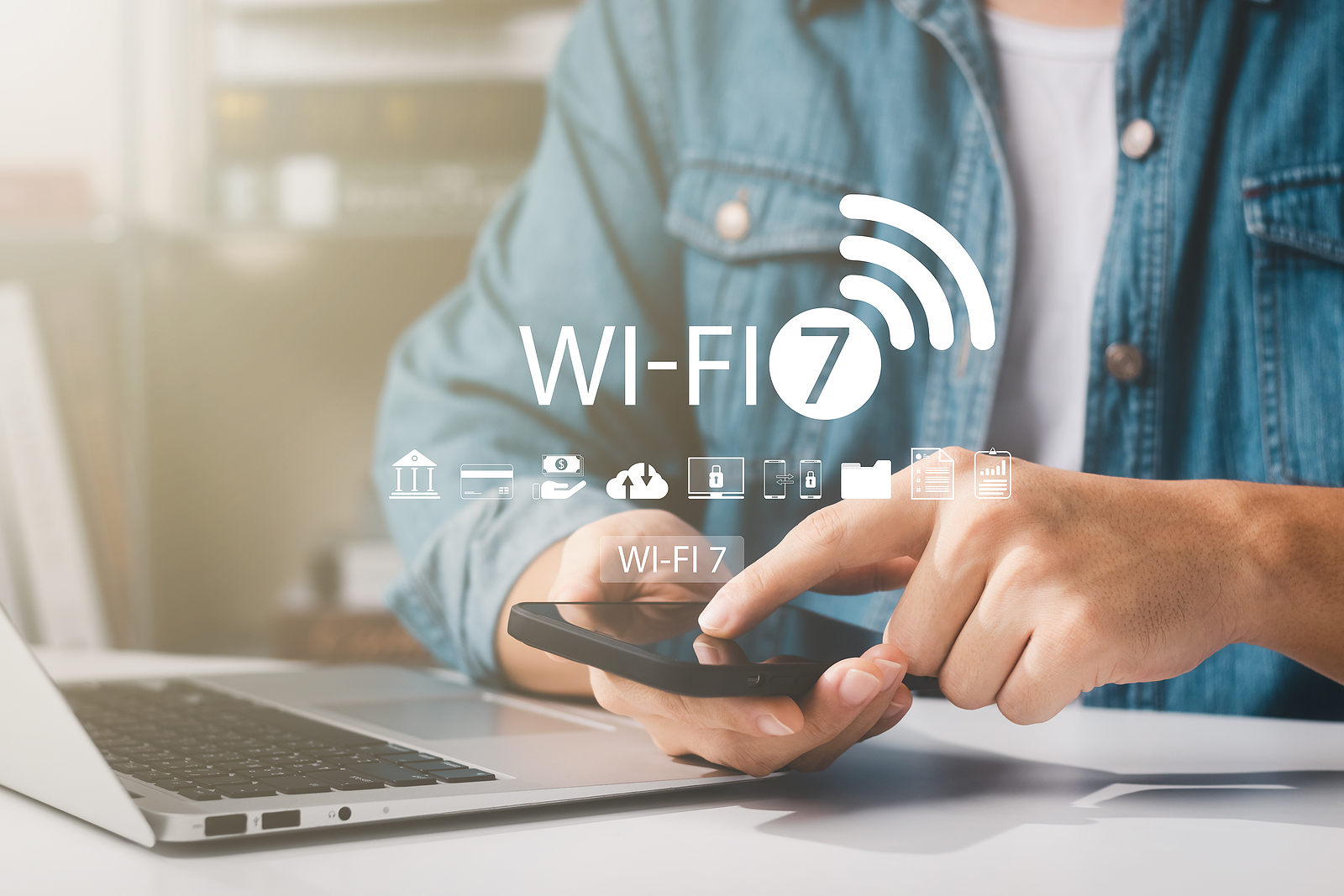
The evolution of wireless connectivity has been transformative for modern life, and now, the next generation—Wi-Fi 7—is here and in the process of adaptation. Wi-Fi 7, also known by its technical standard as IEEE 802.11be, promises to significantly enhance the speed, capacity, and efficiency of wireless networks. As our homes, offices, and cities become more connected than ever before, the need for faster and more reliable Wi-Fi has never been greater. In this article, we’ll explore what Wi-Fi 7 is, how it differs from its predecessors, and what to expect from this groundbreaking technology.
What is Wi-Fi 7?
Wi-Fi 7 is the seventh generation of Wi-Fi technology, designed to offer a major leap in performance over its predecessor, Wi-Fi 6 (802.11ax). While Wi-Fi 6 brought improvements in speed and efficiency, particularly in dense environments like stadiums and apartment buildings, Wi-Fi 7 is set to revolutionize how we experience wireless connectivity.
Wi-Fi 7 is expected to deliver speeds of up to 46 Gbps—a drastic increase from Wi-Fi 6’s maximum of 9.6 Gbps. In addition to faster speeds, it will introduce new technologies that improve data transmission, reduce latency, and optimize network performance, even in heavily congested environments.
This next-generation Wi-Fi will be particularly beneficial for high-bandwidth applications such as 8K video streaming, virtual and augmented reality (VR/AR), online gaming, and the Internet of Things (IoT), where a stable and fast connection is essential.
Key Features of Wi-Fi 7
Wi-Fi 7 brings several innovative features designed to address the limitations of current wireless networks and prepare for the future. Some of the most notable advancements include:
- Higher Throughput with 320 MHz Channels
Wi-Fi 7 will double the channel bandwidth from Wi-Fi 6’s 160 MHz to 320 MHz, effectively allowing more data to be transmitted at once. This wider bandwidth will significantly increase throughput, resulting in faster speeds and better performance, especially in high-density environments where multiple devices compete for bandwidth.
- Multi-Link Operation (MLO)
One of the standout features of Wi-Fi 7 is Multi-Link Operation (MLO). This allows devices to simultaneously connect to multiple bands—2.4 GHz, 5 GHz, and 6 GHz—rather than being restricted to a single band at any given time. By aggregating multiple frequency bands, MLO provides better load balancing and reduces congestion. This feature will ensure a more stable and efficient connection, even in busy networks where several devices are online.
- 4K Quadrature Amplitude Modulation (QAM)
Wi-Fi 7 will introduce 4K QAM, an advanced modulation technique that increases the number of bits transmitted per symbol. While Wi-Fi 6 uses 1024-QAM, Wi-Fi 7’s 4K QAM will significantly boost data transmission rates. However, this increase in efficiency may also require improved signal quality, meaning that devices and networks will need to maintain strong connections to leverage this feature fully.
- Improved Latency with Multi-RU
Wi-Fi 7 will utilize Multi-Resource Unit (RU) Allocation, which allows for more flexible assignment of spectrum resources to devices. By enabling more efficient spectrum use, Wi-Fi 7 will dramatically reduce latency—making it ideal for real-time applications like online gaming, video conferencing, and VR/AR experiences where even minor delays can disrupt the user experience.
- Time-Sensitive Networking (TSN)
Another significant feature is Time-Sensitive Networking (TSN), which is aimed at improving the precision of data delivery. This feature ensures that time-sensitive data packets (such as those in industrial automation, autonomous vehicles, or virtual reality applications) are prioritized and transmitted without delay. TSN will help Wi-Fi 7 meet the needs of industries that rely on real-time communication.
How Does Wi-Fi 7 Compare to Wi-Fi 6?
While Wi-Fi 6 has already brought substantial improvements in speed, efficiency, and capacity compared to previous generations, Wi-Fi 7 takes these benefits to the next level.
- Speed: Wi-Fi 6 tops out at around 9.6 Gbps, while Wi-Fi 7 is projected to offer speeds up to 46 Gbps—nearly five times faster. This increased speed will be crucial as data demands continue to grow with bandwidth-heavy applications such as 8K video, cloud gaming, and large file transfers.
- Latency: Wi-Fi 7’s multi-link capabilities and improved resource management through Multi-RU will significantly reduce latency, a major advantage for gaming, video calls, and VR applications that require near-instantaneous data transmission.
- Capacity: Wi-Fi 7’s use of 320 MHz channels, MLO, and 4K QAM will allow it to handle more devices and data simultaneously, addressing the ever-growing demand for bandwidth in homes and businesses with multiple connected devices.
Applications and Use Cases of Wi-Fi 7
Wi-Fi 7’s advancements will open new possibilities for various industries and applications, particularly in areas where high-speed, low-latency, and large-capacity networks are essential.
- Streaming and Entertainment: With the increasing demand for high-definition content, Wi-Fi 7 will enable seamless 8K streaming, multiple 4K streams, and cloud-based gaming without buffering or lag.
- Virtual and Augmented Reality: VR and AR applications require ultra-low latency to provide smooth and immersive experiences. Wi-Fi 7’s reduced latency and higher throughput will support more complex VR/AR environments, opening up opportunities in gaming, remote work, and education.
- Smart Homes and IoT: As smart homes continue to grow in complexity, with numerous devices connected simultaneously, Wi-Fi 7 will ensure that all devices—ranging from smart thermostats to security cameras—receive sufficient bandwidth without causing network congestion.
- Workplaces and Public Spaces: In offices and public areas like stadiums and airports, Wi-Fi 7 will improve connectivity for thousands of users at once, offering more reliable and faster internet access in high-density environments.
Challenges and Adoption
While Wi-Fi 7 promises many benefits, its widespread adoption will take time. New devices and infrastructure, such as routers and modems, will need to support the new standard. Moreover, the higher-frequency 6 GHz band, which is crucial for Wi-Fi 7’s top speeds, may not yet be fully available in all countries due to regulatory restrictions.
That said, industry leaders are already working on Wi-Fi 7 solutions, and it is expected that the first devices supporting the new standard will arrive in 2024.
Conclusion
Wi-Fi 7 represents a significant leap forward in wireless technology. With faster speeds, improved efficiency, and reduced latency, it will reshape how we experience the internet and enable new applications in entertainment, business, and industry. As we move toward an increasingly connected world, Wi-Fi 7 will be at the forefront of delivering the next generation of wireless connectivity.
Skyline IT Services Disclaimer: This document is intended to offer general information and guidance. It is recommended that you consult with your internal technical and / or legal team to review all details, application and / or policies before implementation or adaptation. This document is provided “as is,” without any warranties of any kind. Skyline IT Services disclaims any liability for loss or damage arising from reliance on the information contained in this document.



